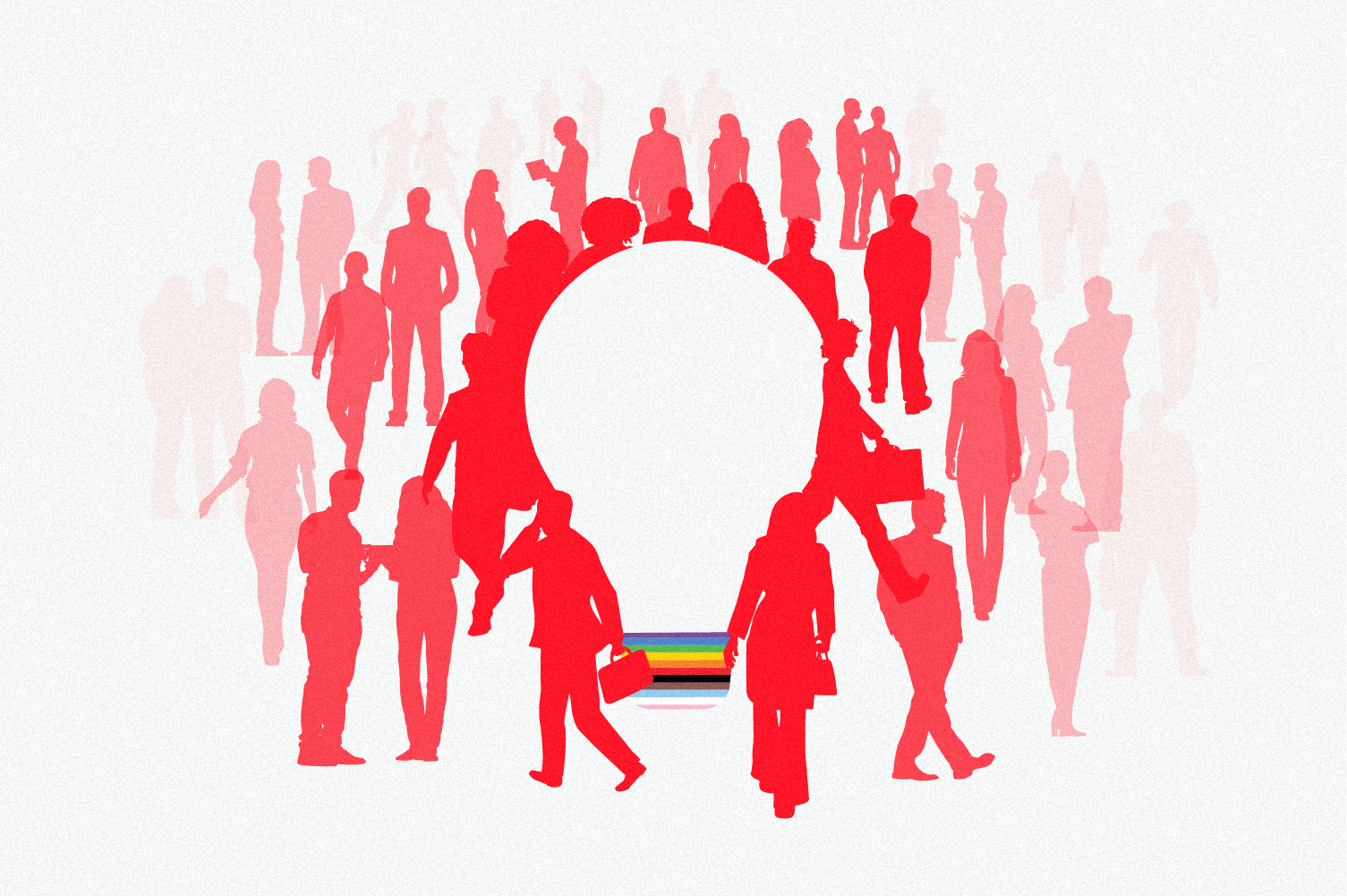
Developing Leaders, Diversity & Inclusion, Leadership & Management
How allies can open doors for marginalized voices in the organization.
It was an unlikely figure who changed the course of my career
In summer of 2011, I was serving in the United States Air Force, stationed in Hungary. I was there to fulfill several roles as the military equivalent of a human resources function, and to collaborate directly with commanding officers from more than 12 nations.
My career up to that point — 11 years and three deployments — had given me a vast amount of experience and expertise. I had established protocols and procedure, revamped training and development, and administered employee onboarding. Coming from leading and guiding one of the most complex contingency functions in my field and supporting over 49,000 people, my new role working with partners in Europe supported just a little over 100 people. I was certain this new post would be my easiest assignment yet.
I assumed incorrectly.
"Do you know why you can’t get anything done around here?"
In my very first meeting, I was ignored when discussing programs and procedures that I not only knew well, but that I had created.
When I spoke up, I encountered sarcasm and snarky remarks which left me feeling undermined and disrespected. Every decision I made was met with fervent objections. Information, resources, and access seemed both intentionally withheld and used against me.
When I reacted, I was told to watch my tone.
My mental health was declining. I became reclusive and distrusting. I stopped speaking up.
That’s when Lt. Col. Todor Golakov, chief of staff for the wing and an officer in the Bulgarian army, did something I will never forget.
One day, he came to my office and asked, “Do you know why you can’t get anything done around here?”
I responded quickly: “No, sir.”
“It’s because you’re Black, young, not an officer, and a woman,” he said. I was both astonished and dismayed. This was the first and only time in my career where someone said the quiet part out loud.
Golakov took a keen interest in me. He was the first person who taught me how to engage with leaders from other nations — skills I now know are called “multicultural competencies.”
He modeled how to challenge others’ perspectives, beliefs, and biases with good questions. He amplified my voice by carrying my message into meetings, gatherings, and rooms when I was not invited. He gave me every resource I required to be successful, and then challenged me to step into my greatness.
Golakov was more than a mentor, ally, or confidant. He was my sponsor.
Great Place To Work® research has shown the importance of sponsorship in creating a more inclusive workplace that unlocks every employee’s full potential. It opens doors, exposes people to opportunities and professional networks, and develops the next generation of leaders.
Author Carla Harris at the Black Enterprise Women of Power Summit explained a sponsor as someone who has a seat at the table and “spends their capital on you.”
Who needs a sponsor?
While every employee can benefit from sponsorship, some employees face an acute need to have their voices elevated.
Employees in the LGBTQIA+ community in particular need support. According to Great Place To Work research, they are 7% less likely to have a psychologically and emotionally healthy work environment compared with their straight coworkers.
For me, as a Black woman who proudly identifies a part of the LGBTQ+ community, sponsorship has made a big impact.
Sponsorship increases visibility and counters the effects of unconscious bias and microaggressions. Support from a sponsor has ensured I feel safe, seen, heard, and understood. Having a sponsor invest in my professional growth has been essential to my success — both in my career and in the philanthropic work I do in my community.
How to be an effective sponsor
Here are four recommendations for allies who want to sponsor others in their organization:
1. Don’t overcommit
As a sponsor, it is important to be honest and upfront with expectations, deliverables, and what that relationship will entail. How often will you meet? What are the goals you hope to achieve together?
Consider setting a time limit for the work you will do together, and make sure the person receiving sponsorship is also clear on their responsibilities.
2. Challenge bias — but focus on results
There will be times where sponsors are called on to challenge the bias of others. Make sure that your efforts avoid grandstanding or virtue signaling but instead focus on a successful final result.
When Golakov wanted to reframe the conversation, he always asked a great question that engaged critical thinking.
I wanted to introduce a new performance review procedure that would reduce time and errors while increasing the efficiency, quality, and speed of the process. In the meeting where I presented my plan, Golakov noticed the discussion was going off the rails.
Rather than berate or lecture others in the meeting, he focused on the operational issue we wanted to solve: “Last year, timeliness and efficiency were a complaint. Kiana has offered a solution that could work. How can we support her?”
With this simple redirect, he sidestepped the skepticism about my plan to focus on the potential results the new process would offer.
3. Be a connector
The best sponsors use their platform as a bridge to help underrepresented groups have more proximity with top leaders in the organization. When bringing people together, how can you help connect new voices with leaders in decision-making roles?
Alex Allen, global inclusion and collaboration leader for Cisco, No. 1 on the Fortune 100 Best Companies to Work For® List two years running, says proximity is crucial for building a better workplace: “It takes leaders who sit in positions of power and privilege, and it brings them closer to the people in their organization from underrepresented groups or communities.”
A good sponsor might host a networking event or invite colleagues to shadow them in an important meeting. Don’t settle for being the person at the table who remembers to think about everyone who isn’t invited. Find creative ways to add chairs around the table.
4. Spend your social capital
Golakov not only advocated for me in my work role, he also used his influence on other projects that helped me feel seen and valued.
While stationed in Europe, I organized a silent march to commemorate Martin Luther King, Jr. and the March on Washington in 1963. The idea was to create an event in which citizens from all countries could participate, but the idea was opposed until the Wing Commander and Golakov leveraged their networks and relationships to garner support for the event.
This encouraged the other nations to not only participate, but to engage in community building with me.
Become a better ally
Subscribe to our culture newsletter for the latest research and trends around what moves the needle for employees in the workplace.










